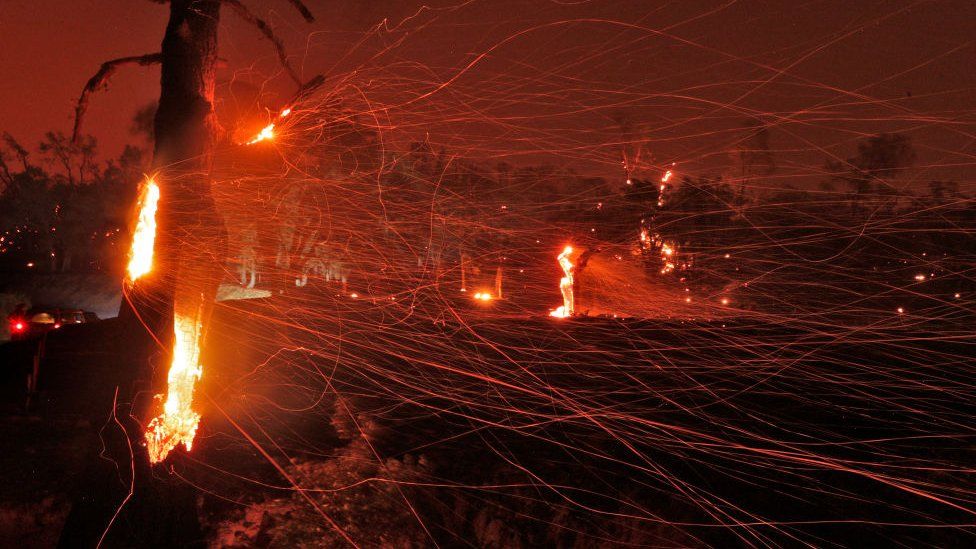 Carlos Avila Gonzalez/The San Francisco Chronicle
Carlos Avila Gonzalez/The San Francisco Chronicle Scientists have identified the weather conditions that create dry lightning, which starts California’s most devastating wildfires.
These conditions can be modelled over the long term to better predict these very rare weather events.
And this will help governments and emergency services respond more quickly, as extreme wildfires increase in frequency and size.
Dry lightning strikes when there is less than 2.5mm (0.01in) of rainfall.
The lower part of the Earth’s atmosphere – the troposphere – is so dry that the rain that normally comes with lightning evaporates before it falls.
Now, the scientists have identified the conditions that allow this:
- higher land temperatures
- dryness in the low troposphere
- moisture and instability in the mid-troposphere
The high temperatures and dryness are also ideal conditions for vegetation to burn.
And climate change is expected to raise temperatures and reduce rainfall in California in coming years.
In August 2020, more than 12,000 dry-lightning strikes started over 650 wildfires across California, burning more than 1.5 million acres of land, with hundreds of thousands of people evacuated.
Dry lightning also started the McKinney fire, the state’s largest this year, burning for the past week.
The paper’s lead author, Dmitri Kalashnikov, from Washington State University, said the multiple ignitions in dry-lightning events made them difficult to control.
“Contrast that to a human-caused fire,” he said.
“That’s one location, whether it’s arson or accidental, and typically they are near where people can access them.
“Consequently, the fire-suppression response can be much faster.”
But dry-lightning fires could start more than 100km (60 miles) from the nearest road, spreading quickly before firefighters reached them.
Lightning had started 28.5% of California wildfires between 1987 and 2020, the study found, but caused 50% of the burnt land.

David McNew/Getty Images
Co-author Deepti Singh said the paper could help “understand the meteorology of dry lightning across this region [which] is crucial to inform forecasting, helping to better constrain future risk of wildfire ignition in California”.
And the scientists now hope to study dry lightning across other parts of the western US, including Oregon and the Rocky Mountains.








